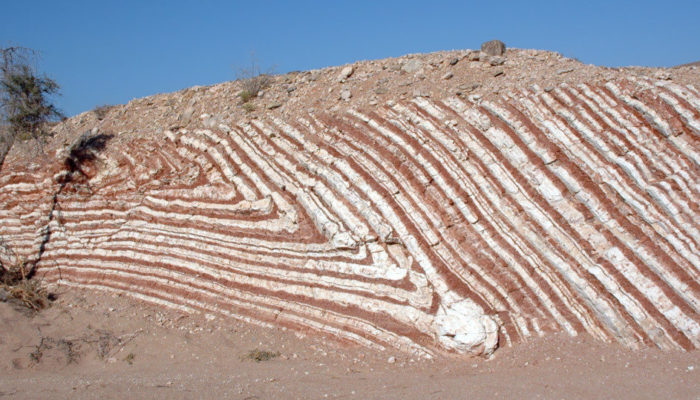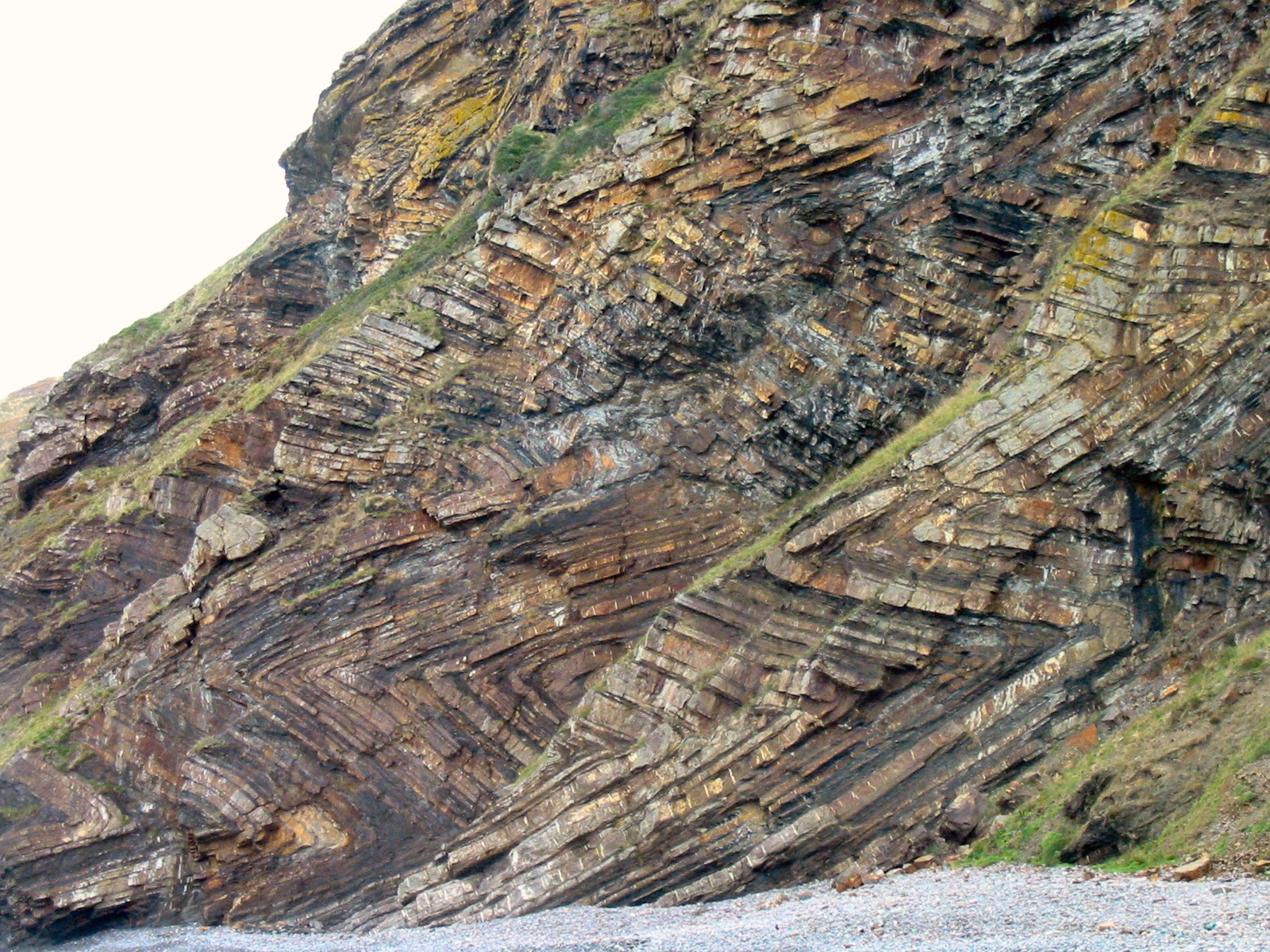
Folds are among the most strikingly beautiful structures we can observe in rocks. There are several ways folds may form in rocks. For instance, folds in sedimentary rocks may develop by liquefaction of soft sediments, but the most common way to produce folds – and also my favorite – is by deformation. When rocks are compressed by tectonic forces, layers (or foliations) bend and warp, producing the classic curved folds we can observe in the field and in the #FridayFold hashtag on Twitter.

Chevron folds at Loughshinny, Ireland. Image © Ekgeo via Wikimedia Commons
Folds are nice to be seen – no doubt, but is there anything else they can tell us? The answer is yes. Exactly like boudinage, folding depends on many physical conditions and properties of rocks. I will make you an example with food (we, geologists, like a lot to make food analogies). Have you ever tried warping an ice cream sandwich? If not, congratulations: you are less mad than the average geologist. If yes, you may have noticed that the biscuit layers are more resistant and rather fracture as they bend, whereas cream flows and responds to deformation without fracturing. In geology, we say that there is a competency contrast between wafer and cream, i.e. wafer is more competent than cream and – notice carefully – at the same temperature conditions. Things may change if you heat your ice cream up or rather you put it in deep freeze. At high temperatures in the oven, the cream becomes even weaker and may flow even without applying an external force, while – if you freeze it – it becomes hard as the wafer and your ice cream will break without folding. This is another basic principle of geology: competency depends on the the physical conditions (i.e. temperature) of deformation.

If you squeeze it, this ice cream sandwich will develop some nice chevron folds (via Wikimedia commons).
Chevron folds are a classic example of strong competency contrast between very weak and very hard layers. They are characterized by straight limbs that abruptly bend on one point, at their hinge zone. This kind of folding is common in low-grade metasedimentary sequences, which typically have hard layers (wafer), separated by weak layers (i.e. cream). In the example below, weak shales are interlayered with sandstones. During folding, shale layers deform easily, whereas sandstone layers are strong and accumulate deformation only in the hinge zones of folds, where fracturing may also occur.

Chevron folds developed in the Bude Fm. at Millook Haven, Cornwall, U.K. The competent layers are represented by turbidites (sandstones) surrounded by incompetent shales. Image © Smalljim via Wikimedia Commons

Chevron folds at Agios Pavlos Crete, Greece. Here the competent layers consist of cherty limestones, separated by thin interlayers of shales. Photo © Überraschungsbilder via Wikimedia commons
The take home lesson for today is that chevron folds (and folds, in general) are not just beautiful, but also very useful: their geometry is a direct consequence of the strength of the rocks that make up the Earth’s crust. Understanding folding processes allows to better understand the behavior of rocks – called rheology – during large-scale processes such as mountain building.
References
Ramsay, J. G. (1967). Folding and fracturing of rocks. Mc Graw-Hill, New York.
Ramsay, J. G. (1974). Development of chevron folds. Geological Society of America Bulletin, 85(11), 1741-1754.





Allan Lopez
Superb pictures !
Stay safe at home please !
Sutikshan
Nice description of Chevron fold around the world
Samuele Papeschi
Thank you!
vijaya
amazing outcrop.
grt explanation for a student and appreciate the efforts
Samuele Papeschi
Thank you very much!